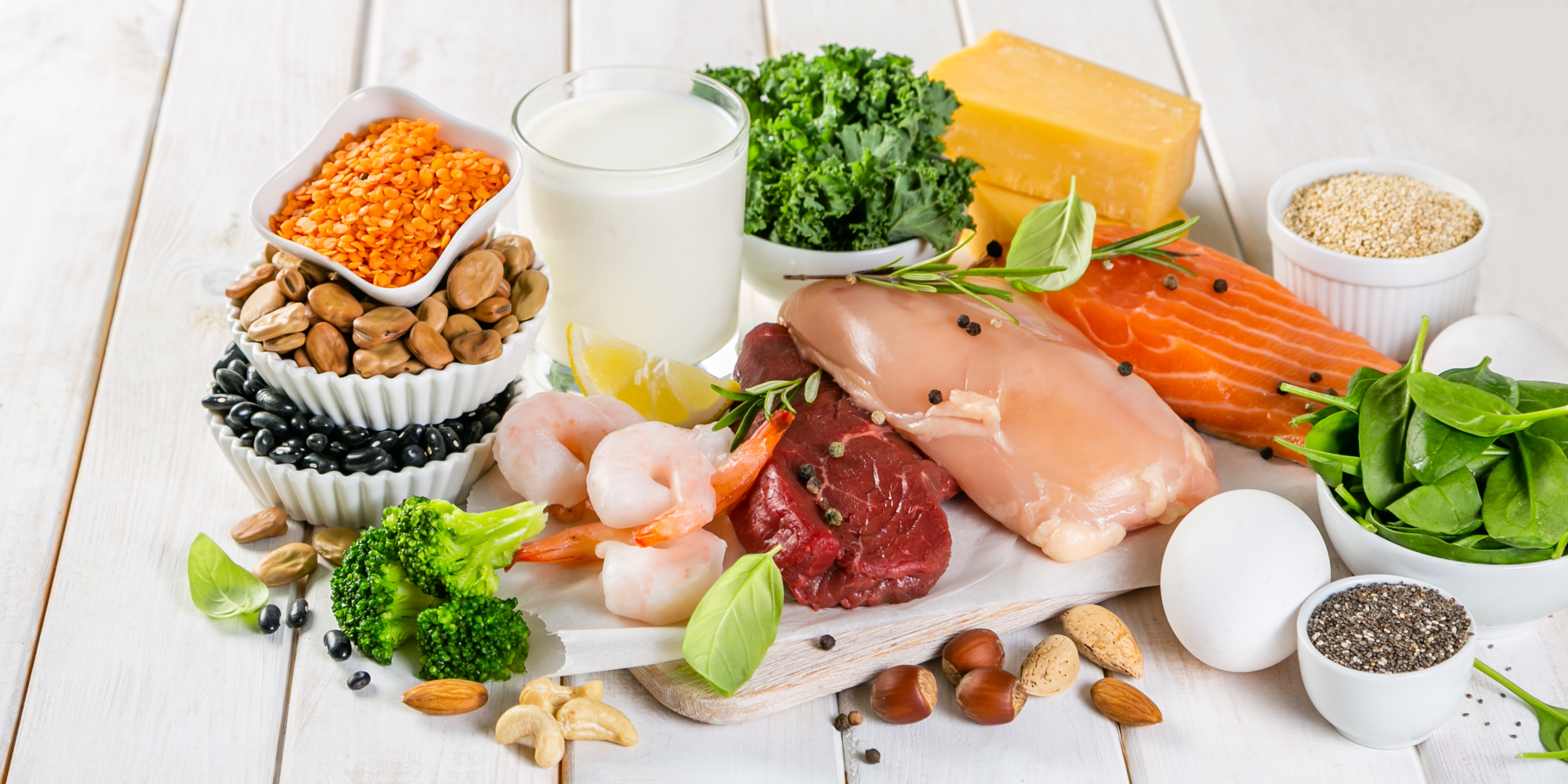Protein Power!
We continue the conversation around Macros, and today we’re exploring Amino Acids. AKA Protein!
The only macronutrient group that hasn’t been under scrutiny by diet culture. Our beloved protein offers a wide range of benefits and can be found in many plant and animal sources of food. On today’s blog we will dive into what protein is, its importance for our body, and where we can find it in our food choices!
Found within our body’s muscles, bones, skin, hair, and all other tissues, protein is vital for many of the body’s enzymatic chemical reactions. Not only does it make up our musculoskeletal system, but our blood is also made up of protein as well. There are at least 10,000 different proteins that make up the human body!
Chemically, protein is broken down into amino acids, think of these as the protein building blocks. Each of these plays a different role in the body’s complex and integrated system. There are 20+ basic amino acid building blocks, none of which can be stored in the body and readily available for use. There are 9 amino acids that we consider essential - histidine, isoleucine, leucine, lysine, methionine, phenylalanine, threonine, tryptophane, and valine. The rest of the amino acids can be made in the body under the right circumstances or converted from other amino acids.
Protein plays an important role in many different body systems. It helps keep the integrity of muscles and tissues (including your pelvic floor muscles!), maintains healthy bones, and is required to recover from injury. Some amino acids are used as hormones, or in the production of hormones that help send messages between cells, tissues, and organs. Protein plays an important role in regulating the body’s pH and helping to maintain fluid balance within the body. The immune system is also reliant on proteins to help form antibodies to help fight infections. Nutrients, blood sugar, and oxygen are transported by protein through the bloodstream, into and out of cells. Protein is also important for providing an important source of energy for the body.
When considering the amount of protein required on a daily basis it is also important to consider individual differences in muscle composition, illness, injury, or recovery from trauma or surgery, or pregnancy. The average equation is 7g of protein for every 20 pounds of body weight. (example: 140lb person = 50g protein/day. 200lb person = 70g protein/day.) There is a wide range of 10-35% of caloric intake a day being from protein that is set by the National Academy of Medicine, with individual differences being the reason for such a wide range. When looking at studies on health and mortality related to protein intake it was not the amount consumed that had the most influence, rather the source of protein that did.
Protein sources can be found from animal and plant-based sources such as red meat, pork, poultry, fish, beans, nuts, seeds, and grains. There is evidence to suggest that red meat and processed meat products can increase the risk of illness and disease such as diabetes, heart disease, and cancer. Whereas plant-based protein sources such as beans and nuts, along with lean animal sources like eggs, dairy, poultry, and fish can help lower the risks of disease and illness.
The following is a list of protein amounts in various foods:
Beef, chicken, turkey, pork, lamb; 1oz, 7g protein
Egg; 1, 6g protein
Salmon; 3oz, 17g protein
Soy milk; 8oz, 7g protein
Edamame; ½ cup, 8g protein
Lentils; ½ cup, 9g protein
Lima beans; ½ cup, 7g protein
Hummus; 1/3 cup, 7g protein
Peanut butter; 2 tbsp, 7g protein
Chili with beans; ½ cup, 10g protein
Nuts; ¼ cup, 4-6g protein
Almond milk; 8oz, 1g protein
Greek Yogurt; 5oz, 12-18g protein
Cottage cheese, Ricotta; ½ cup, 14g protein
Including a diverse mixture of protein sources, plant and animal based, helps to increase the diversity of amino acids in the body. Eating protein with every meal and snack can help space out circulation of amino acids in the blood stream throughout the day. From blood sugar balancing, pH balancing, supporting the immune system and musculoskeletal system, including the pelvic floor supports, protein is key for maintaining a healthy body!
References:
https://nutritionsource.hsph.harvard.edu/what-should-you-eat/protein/
https://www.healthline.com/nutrition/10-reasons-to-eat-more-protein
https://www.healthline.com/nutrition/functions-of-protein
https://www.hopkinsmedicine.org//media/bariatrics/nutrition_protein_content_common_foods.pdf

